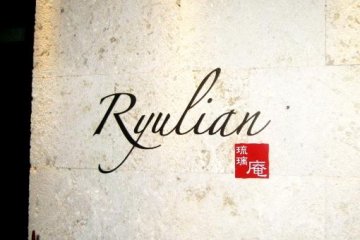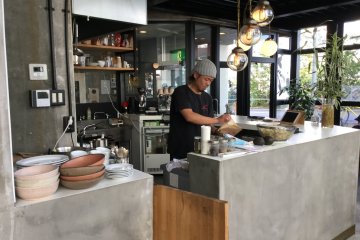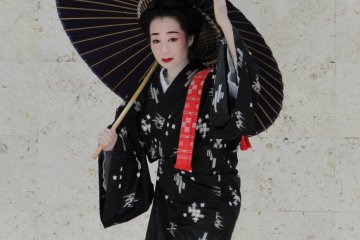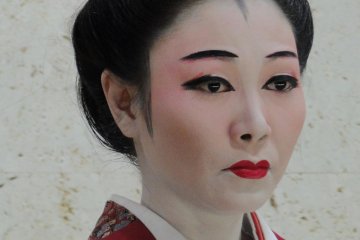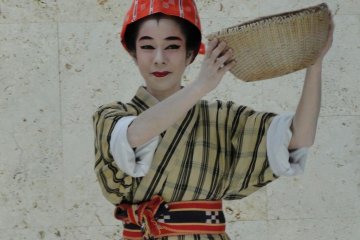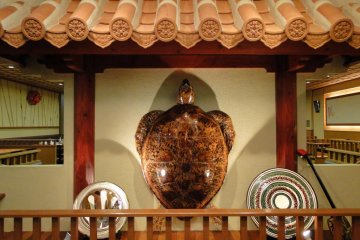Aside from the beaches, Okinawa doesn’t always seem much different from the other forty-six prefectures of Japan. Yet these islands had their identity shaped by centuries of contact with Pacific cultures, influencing everything from food to styles of dance. One of the best places in Okinawa to witness the latter is the Urashima Dinner Theater in downtown Naha.
Urashima Theater’s program offers the audience an overview of Okinawan dance styles in the form of nine or ten short performances. Arguably one of the most popular dances of the Ryukyu Islands is eisa, an exuberant drum-pounding performance complete with piercing whistles and catchy repeated syllables. Eisa, however, is only one of the Ryukyu Kingdom’s folk dances, many of which stem from rituals the island priestesses would perform to ensure bountiful harvests or safe passage on the seas. Two of the folk dances that stuck out in my mind at Urashima were the “Umi no Chinbora”, a dance about women gathering conch shells on the beach, and “Tanchama”, a fishermen’s dance from the tiny hamlet of Tancha near Onna Village.
A few women also performed some classical dances, a style that was once popular in the courts of the various island kingdoms. These dances were considerably slower in tempo and the costumes were more elaborate. One I recognized was the “Yotsudake”, or “four bamboo dance”, where the performers used wooden castanets to click along with the music’s beat. If you have the chance to visit Naha’s Shuri Castle, this dance is often performed in the courtyard several times a day.
As stated in its name, Urashima offers dinner AND a show, so you won’t go hungry while watching the performances. There are several course meals to choose from, ranging from Okinawan cuisine to a steak course. As the theater is accustomed to dealing with the many American military families on the island, the steak course offers decidedly more Western fare, from side salads with Thousand Island dressing to a main course of steak and potatoes. If you’re keen to try some of the local specialties, however, the Okinawan menu features island foods such as goya (bitter melon) tempura and peanut tofu. Even in you aren’t normally an adventurous eater, don’t miss the portion of rafute, glazed pork belly that’s simmered until it basically melts in your mouth.
Urashima offers one performance nightly, divided into two acts. The show begins at 7pm sharp and runs until 8:30pm. Doors open at 6pm so if you arrive early, feel free to get a head start on dinner. The set meals range from ¥3675 up to ¥10500, though if you do order a smaller set you can also choose items from the a la carte menu. Like many establishments in Okinawa, both Japanese yen and major credit cards are accepted.



